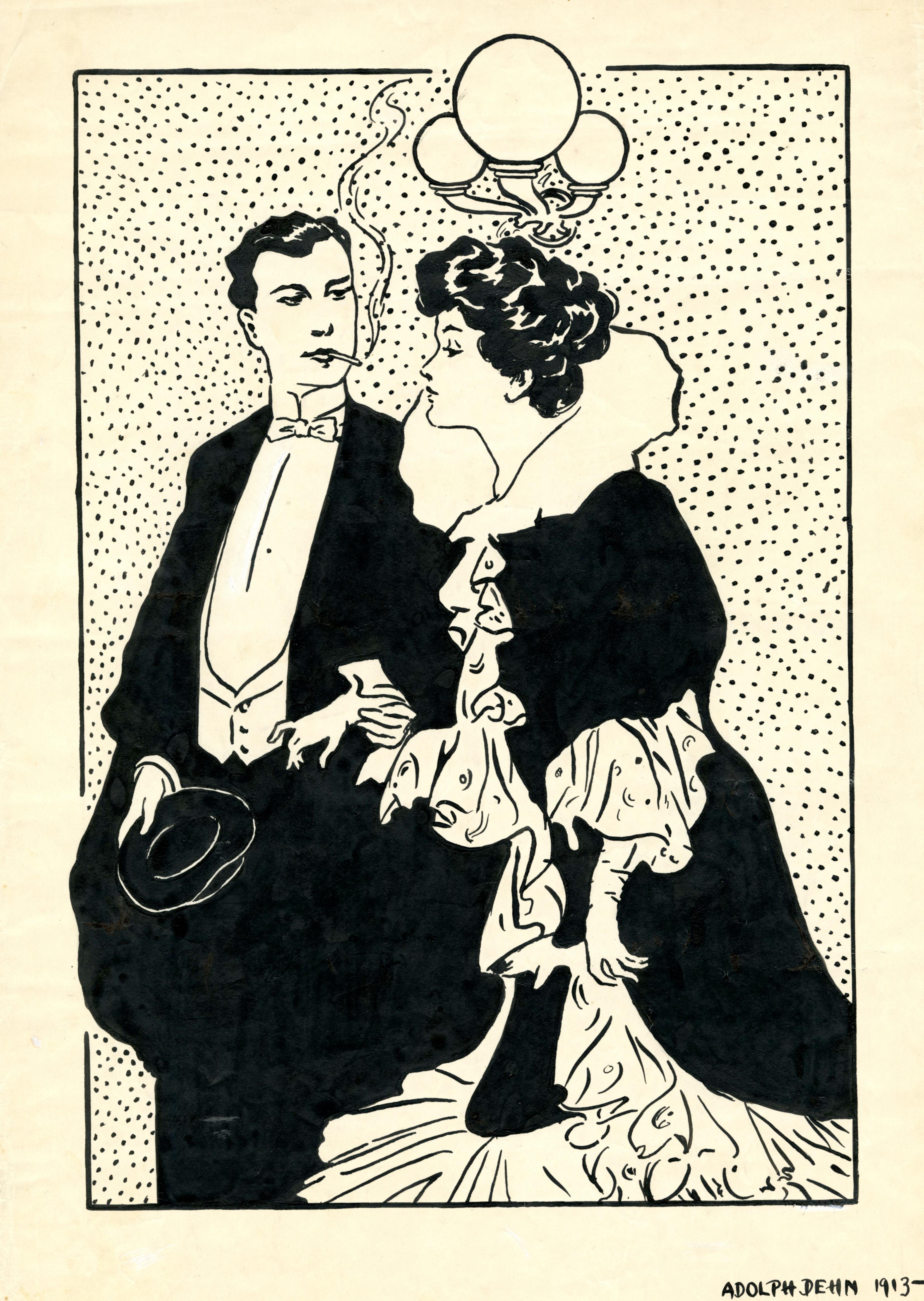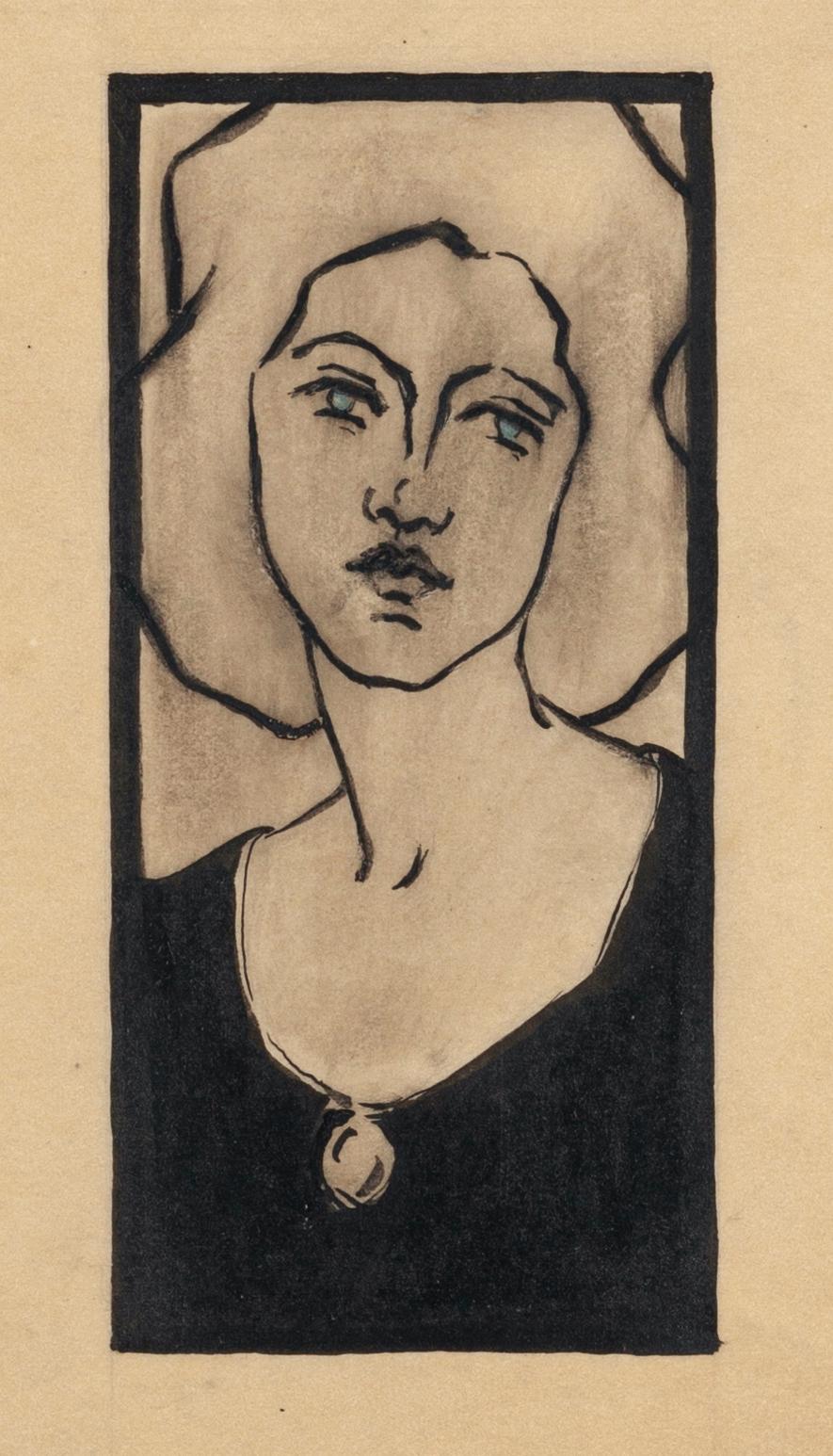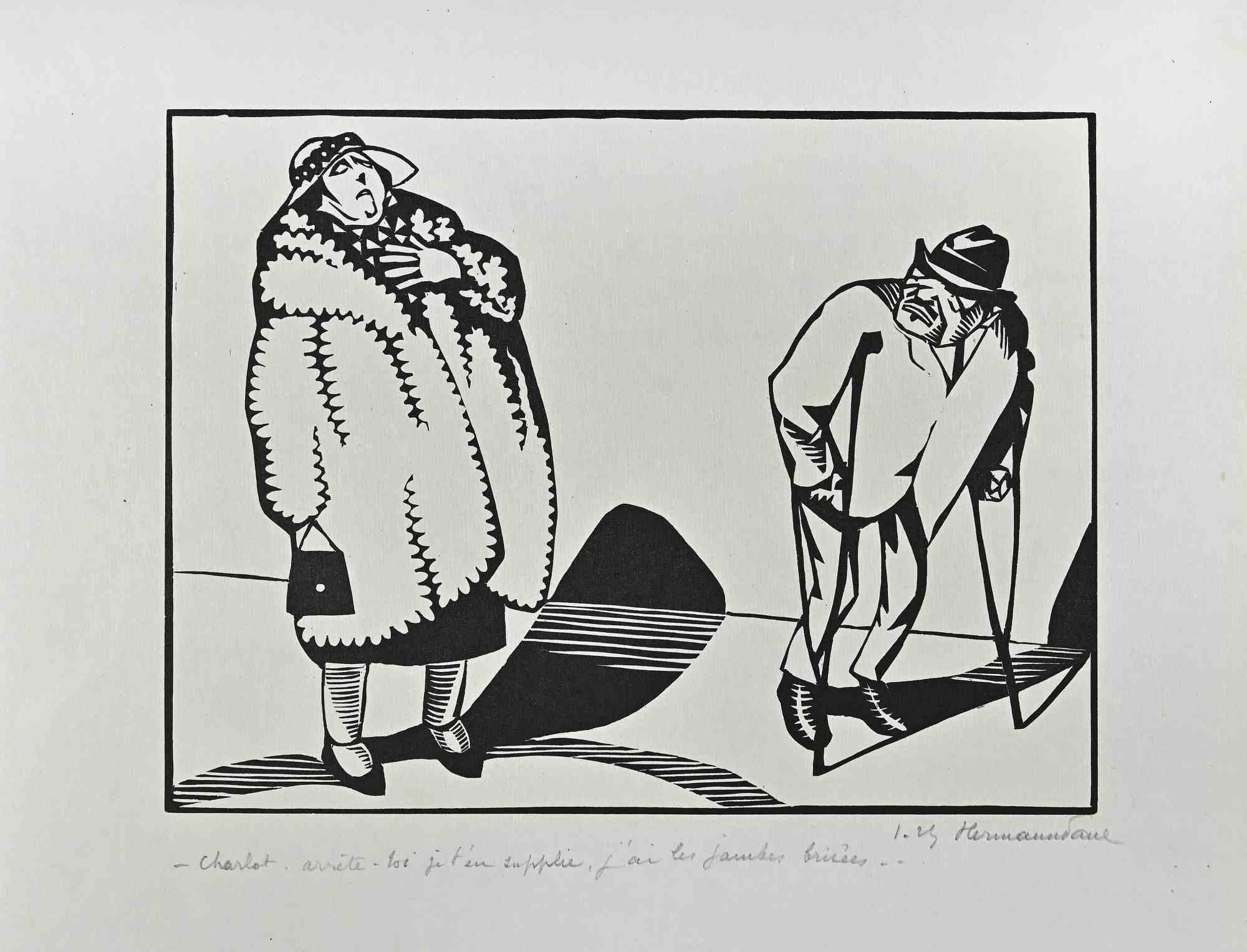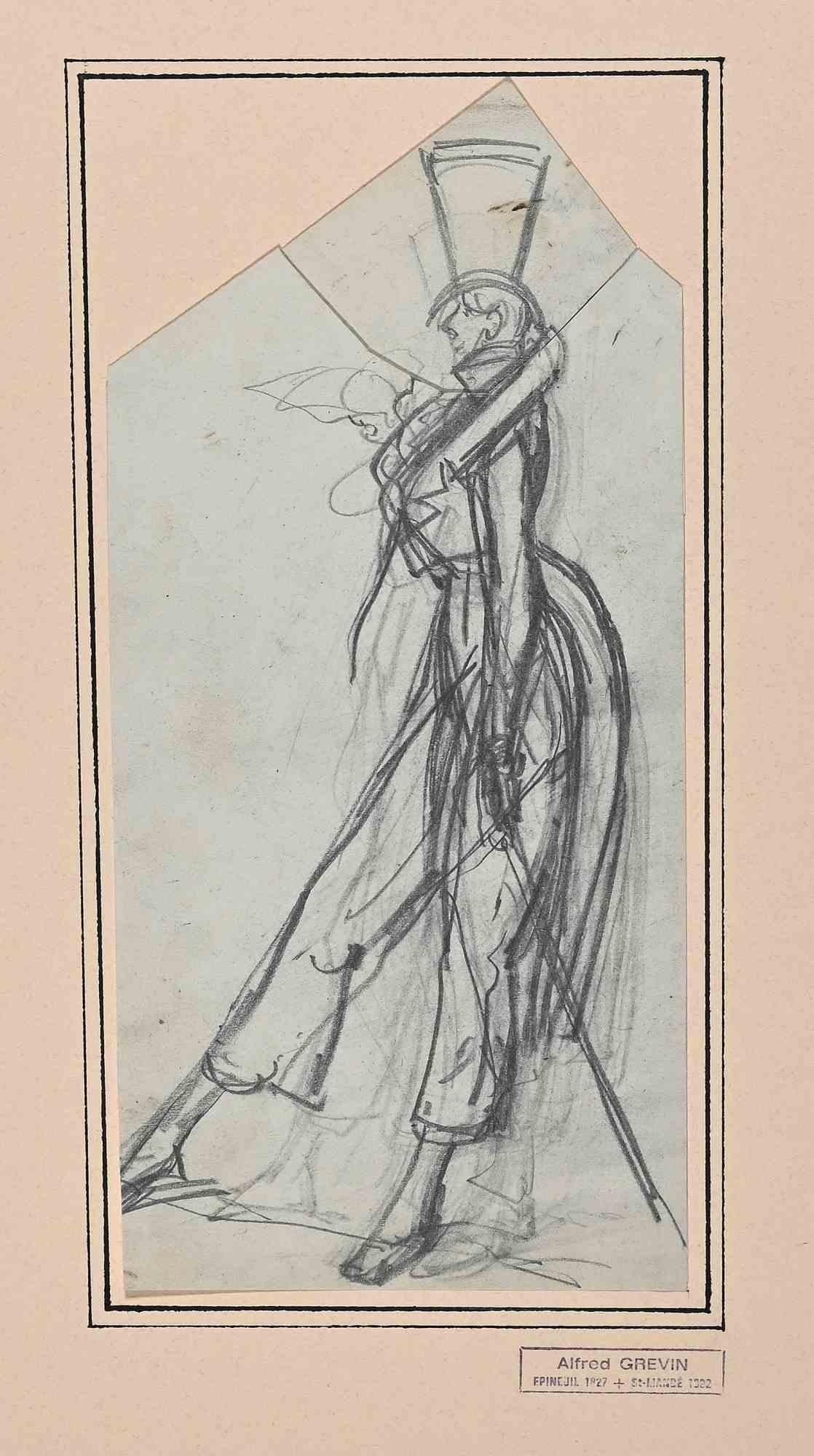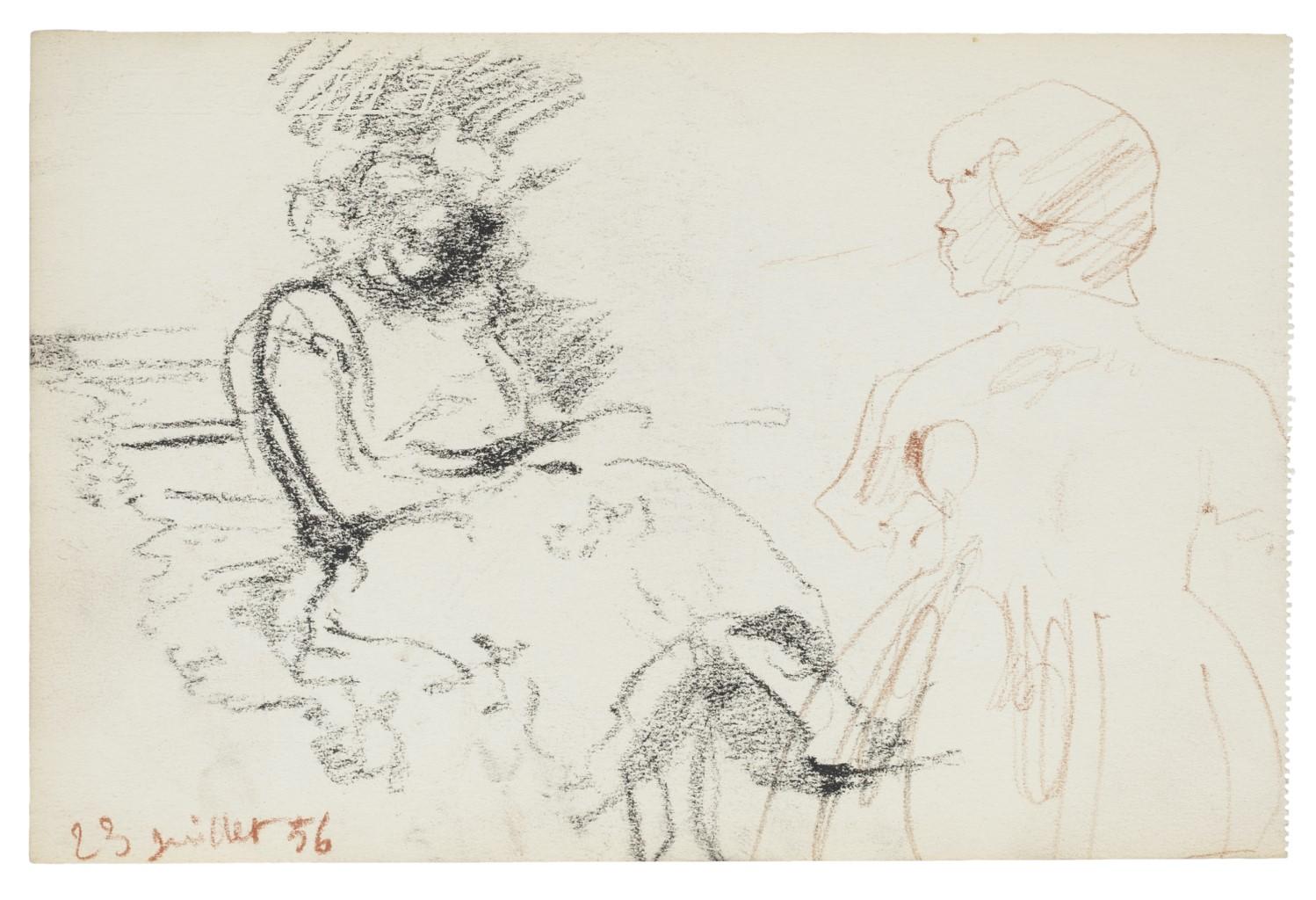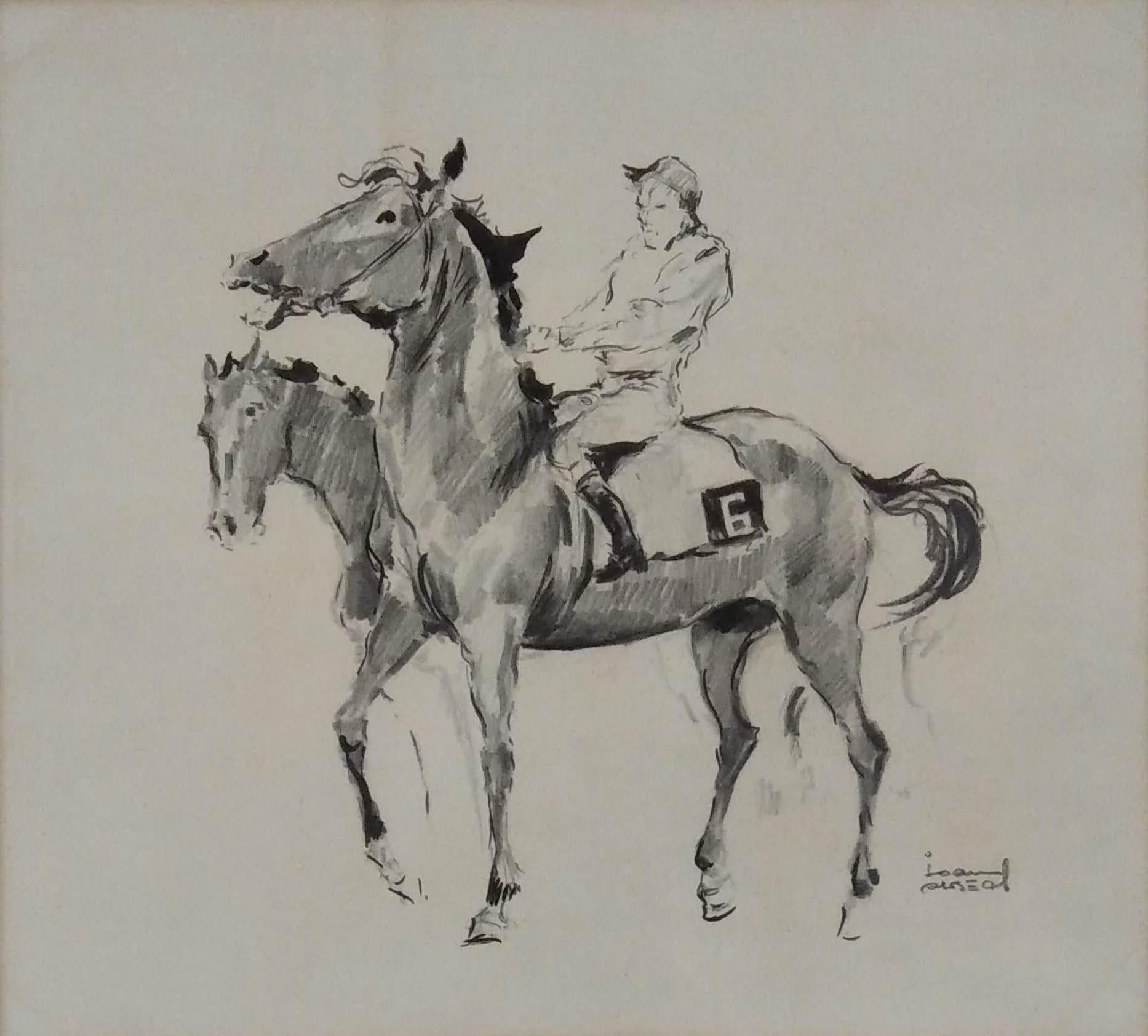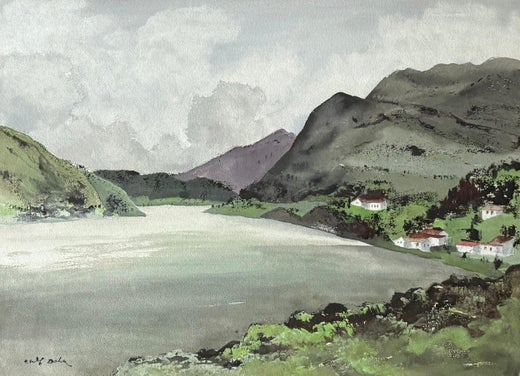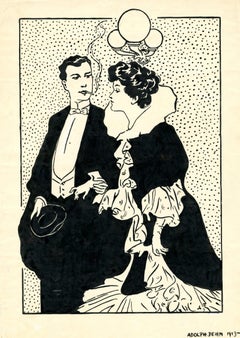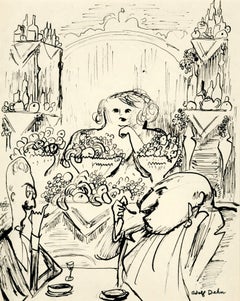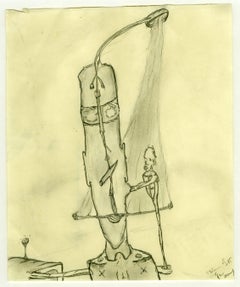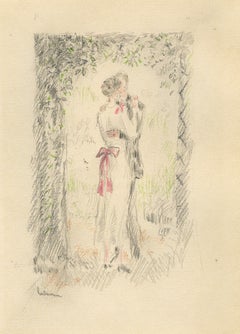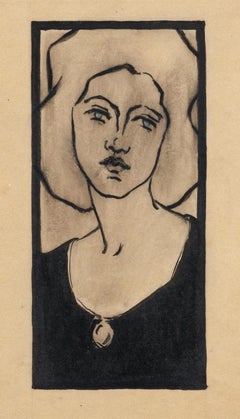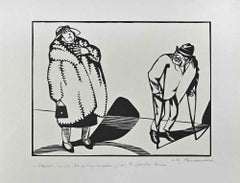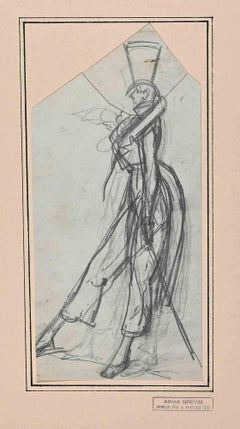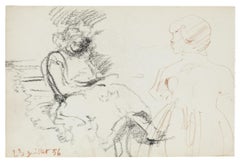Items Similar to untitled (Lesson 3)
Want more images or videos?
Request additional images or videos from the seller
1 of 2
Adolf Arthur Dehnuntitled (Lesson 3)1913
1913
$1,200
£902.90
€1,045.82
CA$1,689.53
A$1,877.25
CHF 986.80
MX$22,913.92
NOK 12,476.64
SEK 11,697.13
DKK 7,805.26
About the Item
Signed and dated by the artist in ink, lower right
Annotated in ink lower left: 3.
Plate 15. - Lesson 3
A very early student work.
From the Artist's estate
- Creator:Adolf Arthur Dehn (1895-1968, American)
- Creation Year:1913
- Dimensions:Height: 11.5 in (29.21 cm)Width: 9 in (22.86 cm)
- Medium:
- Period:
- Condition:Original condition.
- Gallery Location:Fairlawn, OH
- Reference Number:Seller: AD025481stDibs: LU1401865133
Adolf Arthur Dehn
Adolf Dehn, printmaker, watercolorist, and illustrator, was born in Waterville, Minnesota, in 1895. In 1914 he began studying at the Minneapolis School of Art, and in 1917, the year his first published drawing appeared in the progressive magazine, The Masses, he received a scholarship to study at the Art Students League in New York. There he worked with Kenneth Hayes Miller and was introduced to lithography by Boardman Robinson. While in New York, Dehn threw himself into liberal politics. Declaring himself a conscientious objector in 1918, he was forced to spend four months in a Spartanburg, South Carolina, boot camp for refusing to serve in the armed forces and eight months as a volunteer instructor teaching painting and drawing at a hospital for war victims in Asheville, North Carolina. Dehn spent the years 1920 to 1929 in art-related travel in Europe, primarily in Vienna and in Paris, where he made lithographs at the Atelier Desjobert. Throughout this time, Dehn exhibited his work at the Weyhe Gallery in New York and contributed drawings both to magazines abroad and to the radical journal The Masses. Upon his return to New York in 1929, he became a leading figure in printmaking circles, exhibiting his prints to considerable critical acclaim. In 1937, Dehn had worked exclusively in black and white until 1937—halfway through his career—when he began to work in watercolor. During his summer visits to Minnesota, he created a large body of regional watercolors depicting the lakes and farms of his home state. Lithography and watercolor remained his two primary media, and his subjects ranged from social satire to naturalistic landscapes. He authored the treatise, Water Color Painting, in 1945 and two other instructional books on lithography and watercolor in 1950 and 1955. From 1938 to 1939 he taught at Stephens College in Columbia, Missouri, and during the summers of 1940-1942 he taught at the Colorado Springs Fine Arts Center. In 1939 and 1951 Dehn received Guggenheim Fellowships, and 1961 he was elected Full Academician to the National Academy of Design. Dehn exhibited throughout his career, and his works are in the permanent collections of the Metropolitan Museum of Art, the Museum of Modern Art, the Art Institute of Chicago, the Museum of Fine Arts in Boston, and the British Museum, among others. Adolf Dehn died in New York in 1968.
About the Seller
5.0
Recognized Seller
These prestigious sellers are industry leaders and represent the highest echelon for item quality and design.
Gold Seller
Premium sellers maintaining a 4.3+ rating and 24-hour response times
Established in 1978
1stDibs seller since 2013
805 sales on 1stDibs
Typical response time: <1 hour
Associations
International Fine Print Dealers Association
- ShippingRetrieving quote...Shipping from: Fairlawn, OH
- Return Policy
Authenticity Guarantee
In the unlikely event there’s an issue with an item’s authenticity, contact us within 1 year for a full refund. DetailsMoney-Back Guarantee
If your item is not as described, is damaged in transit, or does not arrive, contact us within 7 days for a full refund. Details24-Hour Cancellation
You have a 24-hour grace period in which to reconsider your purchase, with no questions asked.Vetted Professional Sellers
Our world-class sellers must adhere to strict standards for service and quality, maintaining the integrity of our listings.Price-Match Guarantee
If you find that a seller listed the same item for a lower price elsewhere, we’ll match it.Trusted Global Delivery
Our best-in-class carrier network provides specialized shipping options worldwide, including custom delivery.More From This Seller
View AllUntitled (Lesson 4)
By Adolf Dehn
Located in Fairlawn, OH
Signed and dated by the artist in ink, lower right
Annotated in ink lower left: Plate 19. Sec. 1. Lesson 4
Note: A very early student work by Dehn
Provenance:
Estate of the Artist
Category
1910s Figurative Drawings and Watercolors
Materials
Ink
Cornucopia
By Adolf Arthur Dehn
Located in Fairlawn, OH
Signed by the artist in ink lower right
Preliminary sketch in reverse for the 1928 lithograph "Cornucopia," part of Dehn's Paris Lithographs portfolio
An unsigned sketch of tw...
Category
1920s Figurative Drawings and Watercolors
Materials
Ink
Untitled
Located in Fairlawn, OH
Bömmels belonged to the co-founders of the Cologne artist group Mülheimer Freiheit , which also included Hans Peter Adamski , Walter Dahn , Jiří Georg Dokoupil , Gerard Kever and Ger...
Category
1980s Surrealist Figurative Drawings and Watercolors
Materials
Graphite
Preliminary drawing for Remy de Gourmont, Couleurs, (Colors, new tales follow...
By Jean-Emile Laboureur
Located in Fairlawn, OH
Preliminary drawing for Remy de Gourmont, Couleurs, published in Le Mercure de France
(Colors, new tales follow old things), 1908
Graphite and colored pencil, 1926
Signed in pencil l...
Category
1920s Art Deco Figurative Drawings and Watercolors
Materials
Color Pencil
Preliminary drawing for Remy de Gourmont, Couleurs, (Colors, new tales follow...
By Jean-Emile Laboureur
Located in Fairlawn, OH
Preliminary drawing for Remy de Gourmont, Couleurs, published in Le Mercure de France
(Colors, new tales follow old things), 1908
Graphite and colored...
Category
1920s Art Deco Figurative Drawings and Watercolors
Materials
Color Pencil
Untitled
By Leon Kelly
Located in Fairlawn, OH
Untitled
Pastel on paper, 1922
Signed with the artist's initials in pencil
Provenance: Estate of the artist
Francis M. Nauman (label)
Private collection, NY
A very early abstract/cubist work by Kelly. Created while the artist was studying with Arthur Carles in Philadelphia.
Leon Kelly (October 21, 1901 – June 28, 1982) was an American artist born in Philadelphia, PA. He is most well known for his contributions to American Surrealism, but his work also encompassed styles such as Cubism, Social Realism, and Abstraction. Reclusive by nature, a character trait that became more exaggerated in the 1940s and later, Kelly's work reflects his determination not to be limited by the trends of his time. His large output of paintings is complemented by a prolific number of drawings that span his career of 50 years. Some of the collections where his work is represented are: The Metropolitan Museum in New York, The Whitney Museum of American Art, the Museum of Modern Art, the Philadelphia Museum of Art, and Boston Public Library.
Biography
Kelly was born in 1901 at home at 1533 Newkirk Street, Philadelphia, PA. He was the only child of Elizabeth (née Stevenson) and Pantaleon L. Kelly. The family resided in Philadelphia where Pantaleon and two of his cousins owned Kelly Brothers, a successful tailoring business. The prosperity of the firm enabled his father to purchase a 144-acre farm in Bucks County PA in 1902, which he named "Rural Retreat" It was here that Pantaleon took Leon to spend every weekend away from the pressures of business and from the disappointments in his failing marriage. Idyllic and peaceful memories of the farm stayed with Leon and embued his work with a love of nature that emerged later in the Lunar Series, in Return and Departure, and in the insect imagery of his Surrealist work. "If anything," he once said,"I am a Pantheist and see a spirit in everything, the grass, the rocks, everything."
At thirteen, Leon left school and began private painting lessons with Albert Jean Adolphe, a teacher at the School of Industrial Art (now the University of the Arts) in Philadelphia. He learned technique by copying the works of the old masters and visiting the Philadelphia Zoo, where he would draw animals. Drawings done in 1916 and 1917 of elephants, snakes and antelope, as well as copies of old master paintings by Holbein and Michelangelo, heralded an impressive emerging talent. In 1917, he studied sculpture with Alexander Portnoff but his studies came to an abrupt halt with the start of World War I. Being too young to enlist, he joined the Quartermaster Corp at the Army Depot in Philadelphia, where he served for more than a year loading ships with supplies and, along with other artists, working on drawings for camouflage.
By 1920, the family's fortunes drastically changed. His father's business had failed due to the introduction of ready made clothing and his marriage, unhappy from the beginning, dissolved. Broken by circumstance Pantaleon left Philadelphia to begin a wandering existence looking for work leaving Leon to support his mother and grandmother. He found a job in 1920 at the Freihofer Baking Company where he worked nights for the next four years. Under these circumstances Leon continued to develop his skills in drawing and painting and learned of the revolutionary developments in art that were taking place in Paris.
During the day he was granted permission to study anatomy at the Philadelphia School of Osteopathy where he dissected a cadaver and perfected his knowledge of the human figure. He also met and studied etching with Earl Horter, a well known illustrator, who had amassed a significant collection of modern art which included work by Brancusi, Matisse, and Cubist works by Picasso and Braque. Among the artists around Horter was Arthur Carles, a charismatic and controversial painter who taught at the Pennsylvania Academy of Fine Arts. Leon enrolled in the Academy in 1922, becoming what Carles described as, "his best student".
In the next three years Leon work ranged from academic studies of plaster casts, to pointillism, to landscapes of Fairmount Park in Philadelphia, as well as a series of pastels showing influences from Matisse to Picasso. Clearly influenced by Earl Horter's collection and Arthur Carles he mastered analytical cubism in works such as The Three Pears, 1923 and 1925 experimented with Purism in Moon Behind the Italian House. In 1925 Kelly was awarded a Cresson Scholarship and on June 14 he left for Europe.
Paris
The first trip to Europe lasted for approximately three and a half months and introduced Kelly to a culture and place where he felt he belonged. Though he returned to the Academy in the Fall, he left for Europe again a few months later to begin a four-year stay in Paris. He moved into an apartment at 19 rue Daguerre in Paris and began an existence intellectually rich but in creature comforts, very poor. "I kept a cinderblock over the drain in the kitchen sink to keep the rats out of the apartment" he once explained. He frequented the cafes making acquaintances with Henry Miller, James Joyce and the critic Félix Fénéon as well as others. His days were split between copying old master paintings in the Louvre and pursuing modernist ideas that were swirling through the work of all the artists around him. The Lake, 1926 and Interior of the Studio, 1927, now in the Newark Museum.
Patrons during this time were the police official Leon Zamaran, a collector of Courbets, Lautrecs and others, who began collecting Kelly's work. Another was Alfred Barnes of the Barnes Collection in Philadelphia.
In 1929 Kelly married a young French woman, Henriette D'Erfurth. She appears frequently in paintings and drawings done between 1928 and the early 1930s.
Philadelphia
The stock market crash of 1929 made it impossible to continue living in Paris and Kelly and Henriette returned to Philadelphia in 1930. He rented a studio on Thompson Street and began working and participating in shows in the city's galleries. Work from 1930 to 1940 showed continuing influences and experimentation with the themes and techniques acquired in Paris as well as a brief foray into Social Realism. The Little Gallery of Contemporary Art purchased the Absinthe Drinker...
Category
1920s Abstract Abstract Drawings and Watercolors
Materials
Pastel
$4,000
You May Also Like
The Competition - OriginalMixed Mediar by Angelo Griscelli - 1950s
By Angelo Griscelli
Located in Roma, IT
Woman is original drawings in mixed media on paper, realized by Angelo Griscelli (1893-1978).
The state of preservation of the artwork is very good.
The artwork represents a woman ...
Category
Mid-20th Century Figurative Drawings and Watercolors
Materials
Watercolor, Charcoal
Contrasts - Drawing by Hermann Paul - Early 20th Century
Located in Roma, IT
Contrasts is an Original China Ink Drawing realized by Hermann Paul (1864-1940).
Good condition on a white paper.
Hand-signed and titled on the lower margin.
Hermann René Georges...
Category
Early 20th Century Modern Figurative Drawings and Watercolors
Materials
Paper, Ink
Portrait - Original Pencil Drawing by A. Grevin - Late 19 Century
By Alfred Grevin
Located in Roma, IT
Portrait is an original drawing in Pencil realized by Alfred Grévin in the Late-19 Century.
Applied on a Passeprtout:49x 32 cm.
With the stamp of atelier "Grevin" on the lower righ...
Category
Late 19th Century Modern Figurative Drawings and Watercolors
Materials
Pencil
Studies - Original Drawing - 20th Century
Located in Roma, IT
"Studies" is an original drawing in tempera on paper, realized by an Anonymous French Artist of the XX Century .
The state of preservation of the artwork is very good.
Sheet dimens...
Category
20th Century Modern Figurative Drawings and Watercolors
Materials
Charcoal, Oil Pastel
Untitled
Located in Barcelona, BARCELONA
the painting is being offered with a work and authenticity certificate
Category
1980s Aesthetic Movement Figurative Drawings and Watercolors
Materials
Mixed Media, Carbon Pencil
Composition - Drawing by Robert Schmidt - Mid-20th Century
Located in Roma, IT
Composition is a drawing realized by Robert Schmidt in the Mid-20th Century.
Oil pastel and watercolor on paper.
Good conditions with slight foxing.
The artwork is realized throug...
Category
Mid-20th Century Modern Figurative Drawings and Watercolors
Materials
Watercolor, Oil
